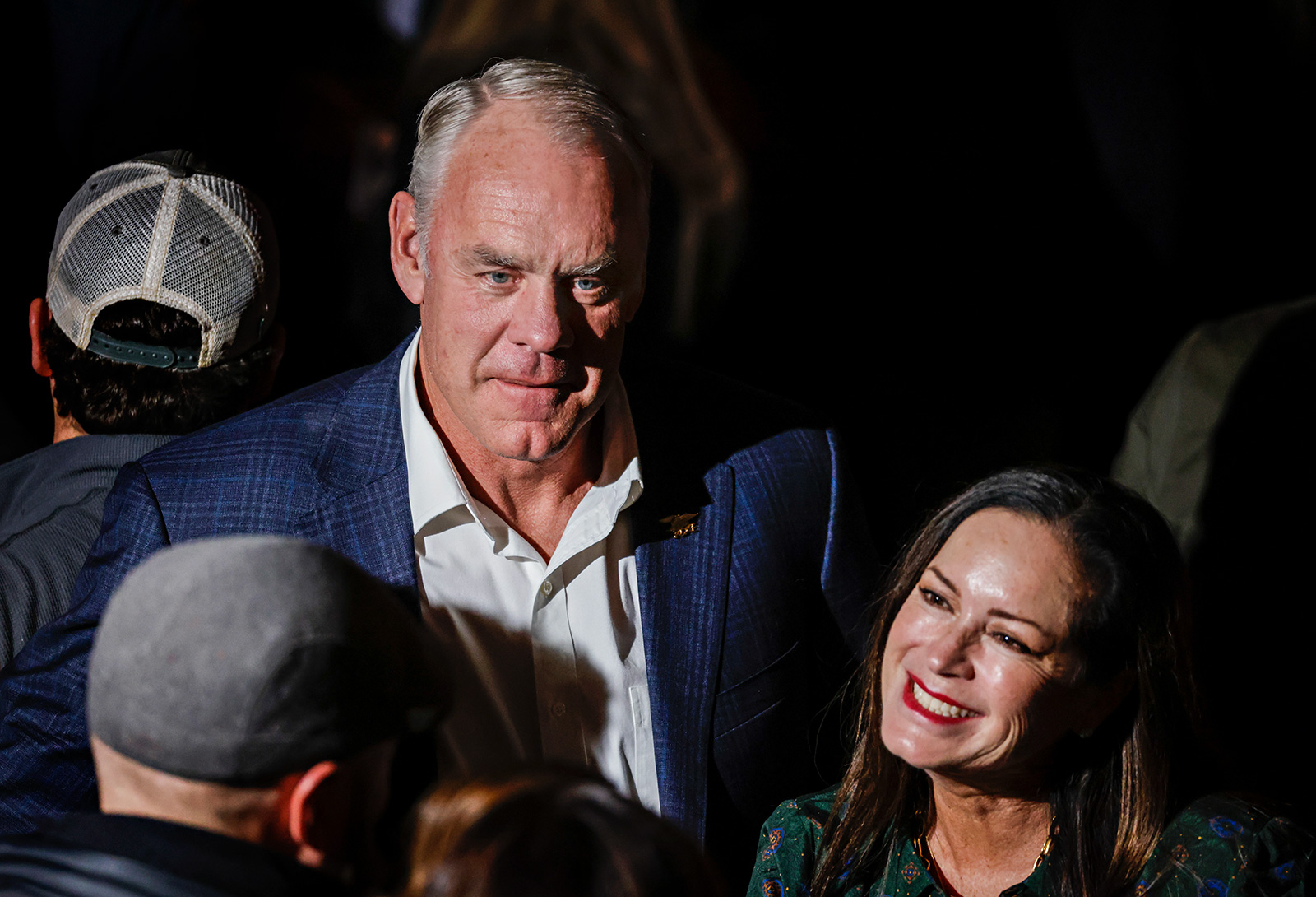Ryan Zinke Wins Race for New Montana House Seat
Twenty-four hours after the polls closed in Montana, the former Trump Interior Secretary held an edge over Democrat Monica Tranel of more than 9,000 votes; Associated Press calls race for Zinke Thursday morning
By Tristan Scott
Former Interior Secretary Ryan Zinke declared victory Wednesday night in the race for a new U.S. House seat representing western Montana, prevailing over Democrat Monica Tranel and Libertarian John Lamb in a midterm election he was favored to win, but which remained too close to call after results were delayed in some counties for more than 24 hours after polls closed.
According to preliminary results reported by the Montana Secretary of State on Wednesday, Zinke received 117,611 votes compared to Tranel’s 108,263 votes and Lamb’s 9,056 votes, giving him a wide enough gap to proclaim himself the winner. Zinke’s campaign issued a statement late Wednesday night following a final projection from the election-results website Decision Desk HQ. The Associated Press called the race for Zinke at 8:31 a.m. on Thursday.
“I’m incredibly grateful to the people of Western Montana for once again placing their trust in me to fight for them in Washington D.C.,” according to the prepared statement. “The voters saw through the vicious lies and deceit of my opponents and radical political groups. Truth matters, and now it’s time to fight for freedom and protect our way of life in Montana.”
According to a release from Tranel’s campaign sent to reporters shortly after 9 p.m. Wednesday, the Democrat was preparing to “make a statement regarding current election results” at a press conference in Missoula at 9:30 a.m. Thursday.
The midterm-election race to decide who would occupy a second congressional seat in Montana marked an historic occasion; since 1990, it has remained one of only a handful of states that elects a single member to the U.S. House of Representatives. The state’s newly drawn First Congressional District not only doubles Montana’s representation in Congress, but it more evenly divides the responsibilities of what for three decades has been an at-large seat covering every inch of the state’s 147,000 square miles.
For the past two years, that representative has been Republican Matt Rosendale, who easily won a second term Tuesday as he fended off a pair of challengers in the race for his newly drawn district covering the eastern portion of the state.
The pair of GOP victories extend a growing Republican dominance in Montana, dovetailing with the 2020 election of Gov. Greg Gianforte, the first Republican elected to the executive statehouse in 16 years, as well as a tide of Republican legislative seats. Republicans have not only occupied Montana’s lone U.S. House seat since 1994, but the party has exiled Democrats from almost every statewide elected office, save for that of three-term U.S. Sen. Jon Tester, who is up for re-election in 2024.
Statewide, Republicans gained some additional leverage, but Tuesday’s midterm election did not signal the national “red wave” that many GOP leaders had anticipated.
As results tricked in Tuesday night, Zinke gathered with supporters at Casey’s Bar in his hometown of Whitefish; however, he didn’t address the crowd or issue a public statement until late Wednesday, when the results picture became clearer.
“I’d like to thank everyone who voted for me on Election Day and all those who volunteered with our campaign to get the word out,” according to Zinke’s statement. “For those of you who did not vote for me, my door is always open and you’ll find me to have an open ear, open mind and shoot straight when we disagree.”
Zinke’s return to Washington D.C. will mark the latest turn in a dizzying political career that spans more than a decade, beginning in 2009 when the former Navy SEAL vaulted from retired military commander to Republican darling in Montana, serving in the state senate before winning a 2014 bid for the state’s lone House seat. Shortly after he successfully defended his incumbency in 2016, a newly elected President Trump nominated Zinke to a cabinet position overseeing the nation’s federal lands and natural resources. During his brief tenure as Interior Secretary, Zinke accrued a heap of ethics investigations ranging from conflicts of interest to abuse of taxpayer funds to Hatch Act violations.
In resigning amid numerous probes in late 2018, Zinke described the investigations as “meritless and false claims” and has continued to dismiss them as politically charged “witch hunts,” which he says are now part of the increasingly “hostile territory” enveloping D.C., and which figured prominently into his decision to step back from the public arena.
That break ended with the inception of Montana’s western district, which was drawn to include the Democratic enclaves of Missoula, Bozeman and Butte, as well as the reliably conservative Flathead and Bitterroot valleys while depositing Helena and Great Falls into the eastern district.
Widely considered the frontrunner since he announced his candidacy, Zinke’s supporters expected him to easily clear the primary field in June. Instead, a hard-fought race ensued with Zinke beating his closest rival, Kalispell physician and former state Sen. Al Olszewski, by less than 2 percentage points. Zinke survived the cutthroat primary only to face a closer-than-predicted race with Tranel, an environmental attorney who has never held elected office but worked for three decades representing renewable energy clients before the Public Service Commission, as well as working as a staff attorney for the quasi-judicial regulatory body.